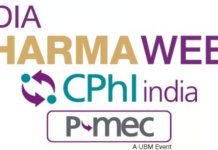New Delhi, December 09, 2016: Death by medicine is a 21st-century epidemic, and America’s “war on drugs” is clearly directed at the wrong enemy!
World Health Organization believes that one in 10 hospital admissions leads to an adverse event and one in 300 admissions in death.
Prescription drugs are now killing far more people than illegal drugs, and while most major causes of preventable deaths are declining, those from prescription drug use are increasing, an analysis of recently released data from the U.S. Centers for Disease Control and Prevention (CDC) by the Los Angeles Times revealed.
The Times analysis of 2009 death statistics, showed:
- For the first time ever in the US, more people were killed by drugs than motor vehicle accidents
- 37,485 people died from drugs, a rate fueled by overdoses on prescription pain and anxiety medications, versus 36,284 from traffic accidents
- Drug fatalities more than doubled among teens and young adults between 2000 and 2008, and more than tripled among people aged 50 to 69
Research estimates up to 440,000 Americans are dying annually from preventable hospital errors. This puts medical errors as the third leading cause of death in the United States, underscoring the need for patients to protect themselves and their families from harm, and for hospitals to make patient safety a priority.
Some of the statistics reveals that:
- The risk of health care-associated infection in some developing countries is as much as 20 times higher than in developed countries
- At any given time, 1.4 million people worldwide suffer from infections acquired in hospitals
- At least 50% of medical equipment in developing countries is unusable or only partly usable. Often the equipment is not used due to lack of skills or commodities. As a result, diagnostic procedures or treatments cannot be performed. This leads to substandard or hazardous diagnosis or treatment that can pose a threat to the safety of patients and may result in serious injury or death
- Each year, unsafe injections cause 1.3 million deaths, primarily due to transmission of blood-borne pathogens such as hepatitis B virus, hepatitis C virus and HIV
- It is estimated that globally 187,000 die each year due to drug over dose. In Asia, it is estimated that there were between 13,600 and 100,700 deaths in 2013, although tentative because of poor regional coverage and reporting of mortality data
- An estimated 350 million diagnostic medical examinations are performed on youngsters, women and children world wide.
- A British National Health System survey in 2009 reported that 15% of its patients were misdiagnosed, an American study published in the Journal of the American Medical Association in 2000 quantified this problem most effectively.
- It said that there are 2,000 deaths every year from unnecessary surgery; 7,000 deaths from medication errors in hospitals; 20,000 from other errors in hospitals; 80,000 from infections in hospitals; and 106,000 deaths every year from adverse effects of medications. In all, 225,000 deaths occur per year in the US due to unintentional medical errors.
Unintended medical errors are a big threat to patient safety today. Although there is no Indian data available on this topic, WHO lists it among the top 10 killers in the world.
World Patient Safety day is celebrated on 9th of December to raise awareness about the safety of patient. Patient safety is a global public health concern and is a fundamental in health care. The main aim of this day is to raise awareness about patient safety issues.
Every process of patient care safety involves a certain degree of uncertainty. The discipline of patient safety highlights the importance to prevent harm to patients, caused by the process of healthcare itself. Improving patient safety means reducing harm to the patient.
Although the Indian government has set up the National Initiative on Patient Safety in the All-India Institute of Medical Sciences a couple of years back, we can reduce the overall mortality and morbidity associated with hospitalization, and also could cut down on the cost, if each institution and private health sectors focuses on patient safety,
Some of the recent advancement in technology has created an immensely complex healthcare system. This complexity brings many challenges for healthcare staff in order to keep the patient safe. Though, a lot of people are treated successfully but there are times when things can go wrong.
In India, many things are contributing to these errors including the poor medical and para medical education systems, poor standardized process and quality control in hospitals, under staffing, poor supervision, increased options of medications available, drug administration by under-qualified professionals, etc.
Many Institutes that offer donation seats, poorly equipped can contribute for poor quality of outgoing students. With the upsurge of health care establishments, there is also high demand-low supply of the right professionals/specialists.
These imbalances strongly contribute to poor safety of patients!
To prevent such errors and reduce the risks of adverse effects of medication or wrong treatment, some of the key steps in health care set ups includes education and training professionals during joining, for building leadership capacity, medication safety, infection control and prevention, safer primary care, implementation science, patient engagement and the importance of creating a safety culture are very much necessary.
Using radiation in medical imaging can save lives, but inappropriate use may lead to unnecessary and unintended radiation doses. Because youth and children are younger and have a longer lifespan than adults their risk of developing radiation-induced effects is greater. Regulation on radiation checks and the need of the tools that provides medical practitioners with information, skills and resources they need to communicate clearly and effectively about the benefits and risks of imaging procedures to pregnant women, paediatric patients and their families could become more stringent.
The Patient Safety Global Action Summit 2016, held on 9-10 March in London, called for a global coordinated and focused movement to improve patient safety. Senior renowned patient safety experts, ministers of health, policy-makers and other international stakeholders discussed the future of patient safety. The WHO Director-General outlined five concrete actions to make real progress: political commitment and leadership, enabling policies, a paradigm shift, performance measurement, and global action by governments.
Keeping this as a basis, we could review the safety aspects being followed in our own set ups and hospitals, taking precautions on careful usage of medications, precaution recommendations to patients who may not really know the adverse effects, training our staff and close supervision for right practices.
Institutions and health care set ups focusing on creating awareness among the public on taking precautions on basic hygiene aspects at a much younger age – in schools and colleges, preventive measures for avoiding hospitalization and proactive lifestyle for avoiding lifestyle disorders and reducing their dependency on long-term medication can take us a long way in creating a safe environment for patients. Steps should be taken to create a sense of responsibility and ownership on one’s own health and wellbeing. This calls for a strong need for an awakening in the thought process of people in our country with a change in their behavioral and belief patterns.
References:
- http://articles.mercola.com
- http://timesofindia.indiatimes.com/india/Medical-errors-in-top-10-killers-WHO/articleshow/8032059.cms
- Source: The United Nations Office on Drugs and Crime (UNODC)’ 2015 World Drug Report’.http://www.unodc.org/wdr2015/
- http://www.overdoseday.com
- http://www.hospitalsafetygrade.org)
Dr Rama Mishra MBBS, MD (Internal Medicine),
CCEBDM,PGD ACID RELATED DISEASES
Physician and Diabetologist
WELLBEEING (Aurazia Wellness Pvt Ltd)
An Integrated Lifestyle Health Centre
Corporate Comm India(CCI Newswire)























